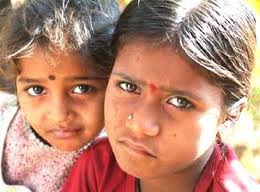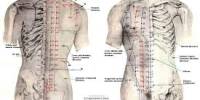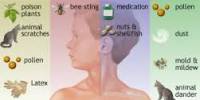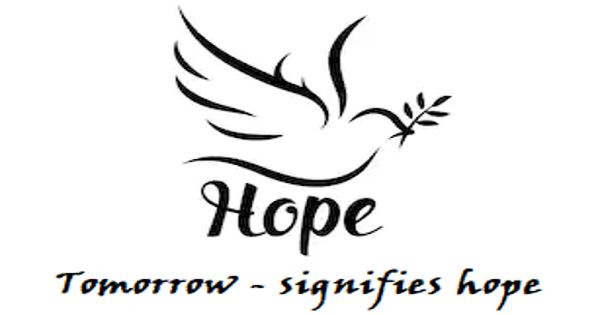Situation of adolescent girls of Bangladesh
Nutritional Status
The nutritional status of adolescents in Bangladesh is deplorable. A large number of adolescent girls suffer from malnutrition. The prevalence of malnutrition is found to be markedly higher among female children compared with male children. Short maternal height has been found to account for a sizeable number of low birth weight babies (2.5 kilograms) who are subsequently more susceptible to infections and death in infancy. Those who survive grow up as undernourished adults, giving rise to an intergenerational cycle of undernourishment. Additionally, small pelvis size may cause obstructed labor due to cephalo-pelvic disproportion. The consequences for women range from ill health (from chronic morbidity due to infections of the reproductive system and conditions such as vesico-vaginal fistulae) to death during and after child birth (BNNS, 1998).
Over one-half of adolescent girls are stunted and more than one-third of adolescent girls in rural areas are wasted. Adolescent girls suffer from iron, iodine, and vitamin A deficiencies. Forty-three percent of adolescent girls suffer from iron-deficiency anemia.
Knowledge of nutrition
Knowledge of nutrition among adolescents is poor and they are generally unaware of the need to consume healthy quantities of foods such as fish, meat, eggs, milk, vegetables, and fruits during pregnancy and lactation.
Food Requirements
One study in Bangladesh sought to evaluate adolescents’ understanding about food required for pregnant and lactating mothers: 40 percent mentioned fish, 27.5 percent mentioned meat, 38 percent mentioned eggs, and 34.7 percent mentioned milk. Similar proportions of adolescents mentioned food requirements like meat, fish, eggs, and milk for themselves. The study described above also asked the female guardians (mothers of adolescents) their opinions on whether adolescent girls or boys need to increase their food intake. Of these guardians, 43.1 percent indicated that boys require more food than girls, 19.4 percent indicated that female adolescents need more food, and 37 percent mentioned that the requirement was the same for male and female adolescents.
The reasons for giving more food to girls included that the girls will go to their husbands’ houses and thus will stay with parents for less time (50 percent); the wear and tear on the body due to pregnancy, childbirth, and blood loss during menstruation (2.3 percent); more physical activity/housework (8.2 percent); the need for good health/nutrition (8.2 percent); and having more health problems than men (4.1 percent). The findings of the Bangladesh National Nutrition Survey, 1998 (relating to adolescents ages 10–17) reveal high levels of both stunting and thinness among adolescent girls. Over one-half of girls ages 10– 12 (54 percent) and 13–17 (56 percent) were found to be stunted, with generally higher rates in rural compared with urban areas. A slightly lower proportion of adolescent boys were stunted: 47 and 50 percent for the two age groups, respectively. The Bangladesh National Nutrition Survey, 1998 showed comparative data on energy intake of male and female adolescents. Girls consume fewer calories than boys. They consume 8 percent fewer at ages 10– 12, 18 percent fewer at ages 13–15, and 28 percent fewer at ages 16–19. In terms of meeting energy requirements, boys ages 13–17 consume just enough calories to meet their needs but girls in the same age group have a 4 percent calorie consumption shortage. In the 10–12 year-old age group there is a shortage among both boys and girls. Deficiencies in calorie intake are greater among urban compared with rural girls.
Deficiency Disease
An anemia survey conducted by Helen Keller International (HKI), Bangladesh in rural areas reported that 43 percent of the 200 adolescent girls ages 11–16 who were studied were anemic. (HKI/Bangladesh, IPHN, NIO, and INFS, 1999).
An indication of the prevalence of iodine deficiency disorders (IDD) among male and female adolescents was obtained from a cross-sectional survey in Upazilla of Bangladesh. The survey reported that 3 percent of adolescents had a visible goiter (i.e., an enlarged thyroid). A visible goiter is nearly twice as common among adolescent girls compared with adolescent boys.
A study of approximately 1,000 male and female adolescents (ages 10–17) in a rural area of Bangladesh found that 1.6 percent was suffering from night blindness and 2.1 percent were suffering from physical signs of vitamin A deficiency. A sub-sample of 189 adolescent girls from a large-scale vitamin A survey reported that sub-clinical vitamin A deficiency was found among 12 percent of the adolescent girls ages 12–16.
The community nutrition services under the National Nutrition Project (NNP, Ministry of Health) will be provided to nutritionally vulnerable groups: children younger than two, adolescent girls and pregnant and lactating women. In addition to other core activities, adolescent forums will be formed.
Statement of the problem
In spite of being a signatory to the UN Convention on the Rights of the Child (the development, survival, protection and participation rights of children), Bangladesh has yet to achieve wide acknowledgement and realization of these rights. The barriers to realizing these rights are more prominent in rural areas and in other vulnerable sections of the society. Bangladeshi women, especially adolescent girls, frequently fall victim to gender-based violence in both public and private life. Lack of proper direction and guidance makes it difficult for them to avoid exploitation. Negligence and discrimination in childhood makes them vulnerable and leads them into a life-long downward spiral of deprivation and exclusion from mainstream society. A UNICEF-sponsored study on rural adolescents in Bangladesh states that during the adolescence, loss of mobility, friends, and freedom becomes even more acute for girls ( Tahara et al, 2002).
Adolescence also marks the end of many girls’ formal education, as they are expected to devote their full time to domestic chores in their husbands’ household (Ali and Mohammad, 2010).
Another problem persistent in rural areas of Bangladesh is lack of sufficient and/or well-paying employment opportunities for girls. This lack of opportunity coincides with the cultural tradition of confining young girls/women within the home and teaching them to play passive roles in decision-making, both inside and outside the family context.
Health profile of adolescents
Availability of relevant data and comprehensive analysis of the adolescent sexual and reproductive health (ASRH) situation is necessary for appropriate planning and successful implementation of ASRH strategy. Unfortunately, data related to adolescents and youth people in Bangladesh, as in many other countries, is limited. The aim of this secondary data analysis is to provide knowledge of the health status of different age groups of the young population, showing trends with disaggregated data on sexual and reproductive health indicators from 1993to 2007. The secondary analysis was conducted using all the BDHSs since 1993 to prepare an adolescent and youth health profile of Bangladesh in order to present the existing situation on sexual and reproductive health of young people. The review is limited by the fact that the BDHS currently only collects data form married adolescent women, leaving out data on unmarried women and adolescent men.
Young people aged 10-24 years constitute about 32 % of the Bangladesh population, and urban areas are home to more and more of them. The group of 10-14 year olds has decreased, while the group of 15-24 year olds has increased since 1993/94.
The percentage of 15-19 year old women with completed secondary education has increased by 41 % during 1993-2007, and the percentage of 20-24 year old women with completed secondary education has increased by 30 % during the same period. Employment among young women doubled from 9 % in 1993to 18 % in 2007. Among the poorest 15-19 year olds 75 % were not working in 1993-94, while 21 % said they were in 2007. More women are now being regularly exposed to some form of mass media; however, more than 37 % of 15-19 year old women were still not exposed to any form of media in 2007.
Hypothesis
Most of the adolescent girl’s nutritional status (BMI) of urban Bangladesh are not in normal level (>18.5-23) and Knowledge of nutrition among adolescent girl’s is poor.
Rationale
Good nutrition is important to maintain and improve health status the body’s protection against infection and therefore helps girls to stay healthy. Under nutrition among adolescent girls is a serious public health and complex problem internationally, especially in developing countries. In Bangladesh there is few study conduct in this topic of adolescent girls. Adolescent girls under nutrition are one of major public health issue in Bangladesh. Malnourished adolescent girls are at risk for growth development, impact on disease symptom, indicator to chronic dietary inadequacy and micronutrient deficiencies and risk factor for other health problems.
Furthermore the initiatives to provide nutritional care and support for adolescent girls such as those undertaken by NGO and adolescents health service programs are limited in scope and coverage. For these reason nutrition education is important to determine the nutritional status of the adolescent girls. Nutrition education plays a crucial role in the adolescent nutrition service program by helping participants achieve positive changes in nutritional status improve their diet. Nutrition education teacher positive changes in eating habit dietary pattern and knowledge attitude and practice about nutrition and related discuss which keeps then healthy.
This study will help to identify the percentage of urban adolescents girls are malnourished. It will also help to proper health profile of adolescents girls in Bangladesh by nutrition education during the intervention. It will enable programs and nutrition services to provide consistent and sound recommendation and contribute to greater awareness of the importance of nutritional responses of adolescent girls.
The nutrition service programme is designed to address these problems through a program of nutritional supplementation, nutrient adequate, nutrition education adolescent needed health care, social and mantel service.
This study will help to development and adoption of nutrition of dietary requirement and aware the knowledge of nutrition. The study will focus the national, community guidelines and planning are the integration of food and nutrition interventions into adolescent girls nutrition service.
This service will recommend for these NGOs and health organizations, which are working with adolescent girls. Government will also come forward to provide support to adolescent girls by maintaining their good nutritional status and prisoner growth development through regular monitoring. It will lead further studies on this topic.
(Health Profile of Adolescents and Youth in Bangladesh (gov’t) .1993/94-2007).
















